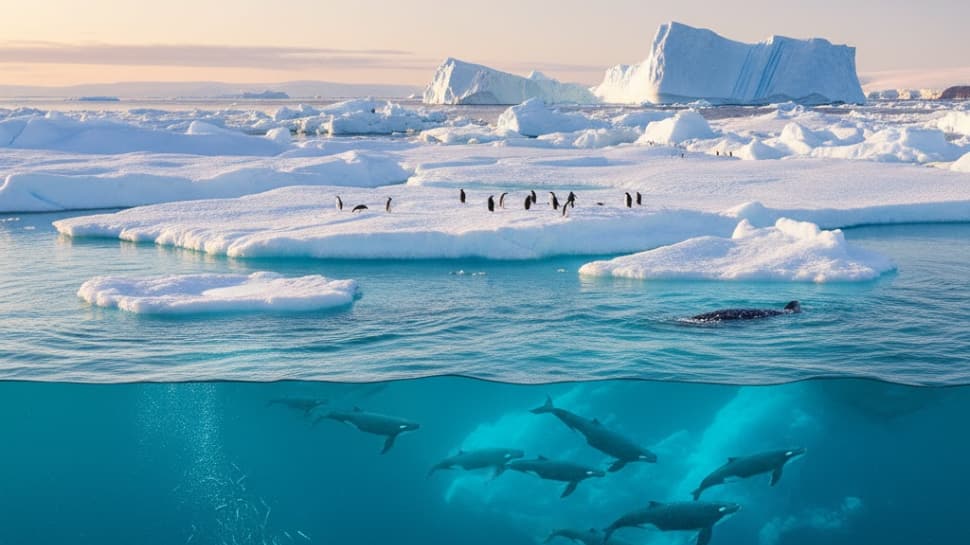Is Terraforming Mars Possible? New Research Reveals Shocking Advances!

Imagine transforming the barren, red landscape of Mars into a vibrant world that could one day teem with life. The concept of terraforming—a process to make another planet or moon habitable—has often been relegated to the realm of science fiction. But what if I told you that recent advancements in technology have shifted this idea from a distant dream to a feasible project?
Terraforming involves altering various aspects of an alien environment, specifically its atmosphere, temperature, and surface conditions, to mimic our own Earth. This means adding oxygen to the air, creating liquid water, and establishing a stable climate. Until now, Mars has been the prime candidate for these transformative efforts, with scientists proposing everything from releasing greenhouse gases to introducing microorganisms that could one day produce oxygen.
However, for decades, serious scientists dismissed the idea of terraforming as a fantasy. Enter Dr. Erika DeBenedictis and her team from Pioneer Labs, who are boldly advocating for a new pathway in research. Their argument? It’s time to take terraforming seriously as a legitimate research program, not because we are ready to start, but because recent breakthroughs make the endeavor less impossible and more challenging yet plausible.
Dr. DeBenedictis, who authored a pivotal summary for the 2025 Green Mars Workshop, asserts that just thirty years ago, terraforming Mars was not only hard but deemed impossible. Today, technological advances—from SpaceX’s Starship drastically reducing launch costs to significant strides in synthetic biology and climate modeling—have altered the conversation drastically. We’re no longer asking whether terraforming is possible, but whether we should even consider it, and if so, how?
The workshop’s summary outlines a clear narrative: beginning with potential planetary outcomes and tracing the steps needed to achieve them. The first phase of this ambitious vision involves warming Mars’s average temperature by several degrees, potentially using engineered aerosols or greenhouse gases. Some recent research indicates that Mars has enough water ice to create an ocean spanning nearly four million square kilometers. If we can raise temperatures by around 30 degrees Celsius, we could start to melt these ice reserves and create conditions for liquid water.
Next comes life. This is where synthetic biology plays a critical role. The researchers propose engineering extremophiles—microbes that thrive in harsh environments. These hardy organisms could initiate the transformation of Mars by producing oxygen through photosynthesis, covering the planet in algae-like growth within a few decades.
The final phase is a centuries-long endeavor. To achieve an oxygen-rich atmosphere thick enough for complex life, we would begin with enormous domed habitats where photosynthesis or water electrolysis could produce breathable air. Over the centuries, plant life would gradually contribute oxygen to the atmosphere, eventually allowing humans to step outside the protective domes to explore the Martian surface.
But it’s not all smooth sailing. The research underscores critical unknowns that need answers. What lies beneath Mars’s ice sheets? How will dust storms behave in a warmer atmosphere? Are the materials for large-scale water electrolysis abundant on Mars? These questions highlight the necessity for extensive research before any terraforming can take place.
Beyond technical challenges, ethical dilemmas also loom large. Terraforming Mars would mean changing it irreversibly, potentially obliterating the chance to study its untouched history. If any microbial life exists there, our efforts could destroy it. Yet, the researchers argue that studying terraforming could yield immediate benefits for Earth—creating technologies that could enhance our own habitat.
As a passionate space enthusiast, I find the idea of planetary engineering captivating—not as an immediate action but as a rigorous area of research. The workshop doesn’t advocate for launching terraforming missions right away; instead, it emphasizes the need for careful studies, detailed climate modeling, and small-scale experiments on upcoming Mars missions. In facing the question of whether we should proceed, we find ourselves at a pivotal moment in scientific history, teetering on the edge of what feels possible.



























